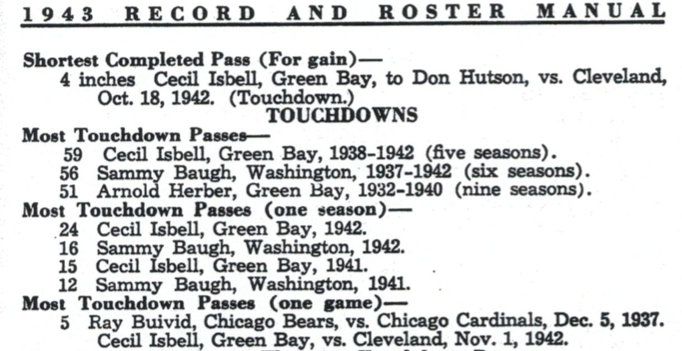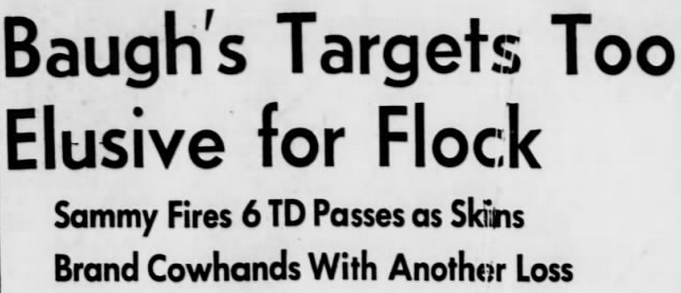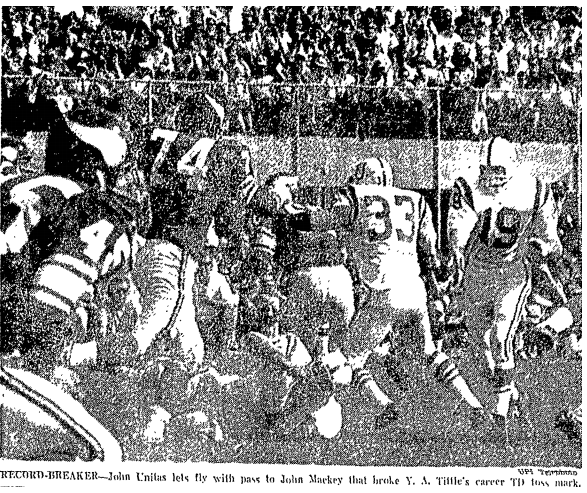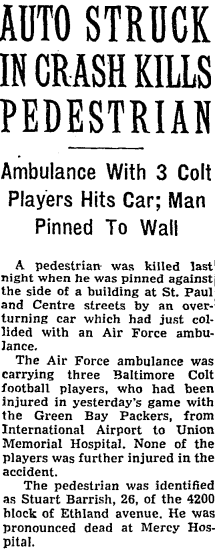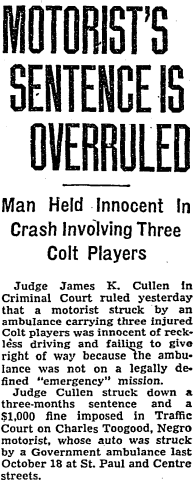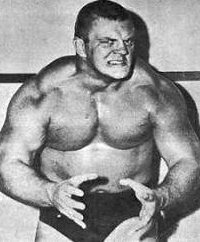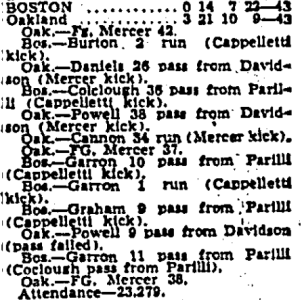Tracing the history of an NFL record can be more fun than a barrel of Statue of Liberty plays. That was certainly the case when I researched the mark Peyton Manning broke Sunday night for career touchdown passes.
The Broncos legend — who’s at 510 and counting — is the eighth quarterback to hold the record since 1943, when the Redskins’ Sammy Baugh took possession of it. All eight — Baugh, Bobby Layne, Y.A. Tittle, Johnny Unitas, Fran Tarkenton, Dan Marino, Brett Favre and now Peyton — are either in the Hall of Fame or guaranteed to get there. The NFL isn’t as stats-driven as baseball, but this mark is probably the closest it comes to the home run record in baseball. (Once upon a time, the Holy Grail was the career rushing record, but that was before rule changes reduced the running game to a quaint sideshow.)
The year Baugh broke the mark, statistics-keeping was much less exacting than it is now. In fact, the league didn’t even know who held the record, much less how many TD passes he’d thrown. As proof, I offer page 43 of the 1943 Record and Roster Manual. As you can see, the Top 3 under “Most Touchdown Passes” at the start of that season are Cecil Isbell with 59, Baugh with 56 and Arnie Herber with 51. (Isbell and Herber, two former Packers, had retired, though the latter would make a comeback in 1944.)
Unfortunately, the figures aren’t accurate. Subsequent research revealed that Herber was No. 1 with 66 (not 59), followed by Isbell with 61 (not 59) and Baugh with 57 (not 56). Also, Arnie was actually tied with Benny Friedman, who’d thrown 56 of his 66 TD passes from 1927 to ’31, before “official” records were kept. (Or unkept. As I said, there were lots of mistakes that weren’t caught until later.)
Anyway, when Baugh tossed No. 67, there was no mention of the record in the newspapers. Instead, sportswriters gushed about another mark he broke that afternoon — by throwing for six scores in a 48-10 bludgeoning of the Brooklyn Dodgers. Thus, the headline in the next day’s Brooklyn Eagle looked like this:
“All the stunned crowd could see,” the Eagle’s Harold C. Burr wrote, “was Bob Seymour, Andy Farkas, Wilbur Moore and [Joe] Aguirre . . . taking all sorts of passes — long, short, high and low, leisurely and hurried from the sharpshooter behind the Redskin[s] line, who calmly looked over the field and picked out the man in the clear. Once they gathered in the leather, over their head, waist high or off their shoetops, on the gallop or standing waiting, the receivers whirled away from the Dodger[s] secondary like autumn leaves.”
As terrific as Manning was against the 49ers — and he carved them up to the tune of 318 yards and four touchdowns — he didn’t match Baugh’s 376 yards and six TDs against the Dodgers. So far, nobody who’s broken the record has had a game like that.
By 1962, when the Steelers’ Layne passed Baugh’s mark of 187 by throwing his 188th and 189th in a 30-28 win over the Cowboys, there was a little more awareness of these career achievements. The Pittsburgh Post-Gazette’s headline:
“Layne and the immortal Sammy Baugh of the Washington Redskins had been tied for most TD passes at 187,” Jack Sell reported. “Slingin’ Sam finished his career in 1952.
“The tiebreaker came on a beautiful 38-yard play with Buddy Dial on the receiving end. It not only smashed the record but put Rooney U. ahead to stay in the second quarter.”
There wasn’t much exulting on Layne’s part, though. He’d had to leave the game briefly in the first quarter after he “got slugged,” he said, but didn’t offer any other details about the incident. [At 36 — and playing his final season — Bobby still didn’t wear a facemask.] It should have been one of his more satisfying moments, coming as it did in Dallas, where he’d played his high school ball. The game was even stopped so he could be presented with the ball. But his basic reaction was: “It warn’t nothing. . . . It didn’t feel a damn bit different from any other touchdown pass I’ve thrown.”
(Yes, he said “warn’t.”)
Less than 15 months later, in December 1963, the Giants’ Tittle went shooting by Layne’s mark of 197. He, too, did it against the Cowboys at the Cotton Bowl. (Meaning Dallas coach Tom Landry bore witness to both Layne and Tittle breaking the record. Bet he was thrilled.)
The game took place just nine days after the Kennedy Assassination. (How weird must it have been to play in Dallas that close to the tragedy?) TD No. 198 — a 17-yarder to Del Shofner with five minutes left — gave the Giants the victory, 34-27. The pass was released, The Associated Press noted dramatically, “just as the old boy was being slammed to the ground.”
Here’s what’s really funny: The New York Times was so nonchalant about the mark that reporter William N. Wallace didn’t mention it until the seventh paragraph of his story. And when he did mention it, it was only after mentioning first that “Don Chandler . . . kicked a 53-yard field goal for New York today. It was the longest in Giant[s] history and tied the third-longest kick listed in the NFL record book. [Chandler’s] kicking was a major contribution to the Giant[s] victory. So were two touchdown passes by Y.A. Tittle, who thereby set a record. The 37-year-old quarterback has thrown more touchdown passes than anyone else in the 43-year-old league — 197. Bobby Layne held the old mark of 196.”
Talk about burying the lead.
But then, there was something unusual about most of these history-making performances. For instance, when the Colts’ Unitas topped Tittle’s mark of 212 in 1966, the opposing quarterback was the Vikings’ Tarkenton — who in ’75 would break Johnny U.’s record of 290. What are the odds of that?
And when the Dolphins’ Marino blew by Scramblin’ Fran’s mark of 342 in 1995, the opposing quarterback was the Colts’ Jim Harbaugh — the same Jim Harbaugh who, as coach of the 49ers, got to admire Manning’s handiwork up close Sunday night. When he wasn’t gnashing his teeth, that is.
(A couple of other things also made Marino’s feat unusual. One, he had the same coach Unitas did in ’66: Don Shula. And two, he was the only one of the eight QBs who didn’t come away with a victory. Despite his four touchdown passes, which rallied his team from a 24-0 deficit, Miami lost, 36-28.)
Only Favre’s record day was utterly ordinary, devoid of strangeness or coincidence. When the Packers icon threw for his 421st TD to overtake Marino in 2007, it was simply a case of catching the Vikings in a blitz and whipping a 16-yard pass to Greg Jennings on a slant. The middle had been vacated by the safety. Jennings, covered by the nickel back, had no trouble getting open. It couldn’t have been much easier.
And now we have Manning replacing Favre (508) atop the all-time list, firing for one, two, three, four scores to lead Denver to a 42-17 win. You may have noticed, too, that there was plenty of build-up before the game, exhaustive discussion of the record during it and the requisite amount of whoopee when the mark finally fell.
The NFL has come a long way from 1943 — from the days when Sammy Baugh, its most famous player, could break a major record and no one would be aware of it. Indeed, I wouldn’t be surprised if the game story in Monday’s Denver Post mentioned Manning’s accomplishment before the seventh paragraph.

